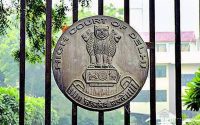Explained: What bringing the Chief Justice of India’s office under RTI means.
Source – indianexpress.com
On Wednesday, the Supreme Court ruled that the office of the Chief Justice of India (CJI) is a public authority under the Right to Information (RTI) Act. A five-judge Constitution Bench headed by Chief Justice Ranjan Gogoi, and including Justices N V Ramana, D Y Chandrachud, Deepak Gupta, and Sanjiv Khanna, upheld a Delhi High Court ruling of 2010, and dismissed three appeals filed by the Secretary General and the Central Public Information Officer (CPIO) of the Supreme Court.
The issue before the court
The judgment pertained to three cases based on requests for information filed by Delhi-based RTI activist Subhash Agarwal, all of which eventually reached the Supreme Court. In one of these, Agarwal had asked whether all Supreme Court judges had declared their assets and liabilities to the CJI following a resolution passed in 1997. He had not requested for copies of the declarations.
While the CPIO of the Supreme Court said the office of the CJI was not a public authority under the RTI Act, the matter reached the Chief Information Commissioner (CIC) where a full Bench, headed by then CIC Wajahat Habibullah, on January 6, 2009 directed disclosure of information.
The Supreme Court approached the Delhi High Court against the CIC order. High Court Justice Ravindra Bhatt (who was later elevated as a Supreme Court judge) held on September 2, 2009 that “the office of the Chief Justice of India is a public authority under the RTI Act and is covered by its provisions”. The Supreme Court then approached a larger Bench comprising then Chief Justice of Delhi High Court Ajit Prakash Shah, Justice Vikramjit Sen, and Justice S Muralidhar, which passed its judgment on January 13, 2010 holding that the judgment of Justice Bhatt was “both proper and valid and needs no interference”.
SC plea to SC, about SC
The Supreme Court in 2010 petitioned itself challenging the Delhi High Court order. The matter was placed before a Division Bench, which decided that it should be heard by a Constitution Bench. As the setting up of the Constitution Bench remained pending, Agarwal filed another RTI application. The Supreme Court told him on June 2, 2011 that orders for constituting the Bench “are awaited”. The Constitution Bench remained pending across the tenures of Chief Justices K G Balakrishnan, S H Kapadia, Altamas Kabir, P Sathasivam, R M Lodha, H L Dattu, T S Thakur, J S Khehar and Dipak Misra. CJI Gogoi last year constituted the Bench, which reserved its judgment on April 4 this year, and pronounced it on Wednesday.
While ruling that the office of the CJI is a public authority, the Supreme Court held that RTI cannot be used as a tool of surveillance and that judicial independence has to be kept in mind while dealing with transparency. While CJI Gogoi, Justice Gupta and Justice Khanna wrote one judgment, Justices Ramana and Chandrachud wrote separate verdicts.
Justice Ramana noted that Right to Privacy is an important aspect and has to be balanced with transparency while deciding to give out information from the office of the Chief Justice of India. Justice Chandrachud wrote in his separate judgment that the judiciary cannot function in total insulation as judges enjoy a constitutional post and discharge public duty.



